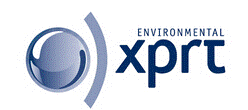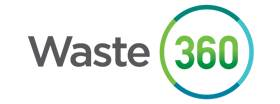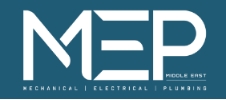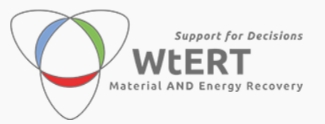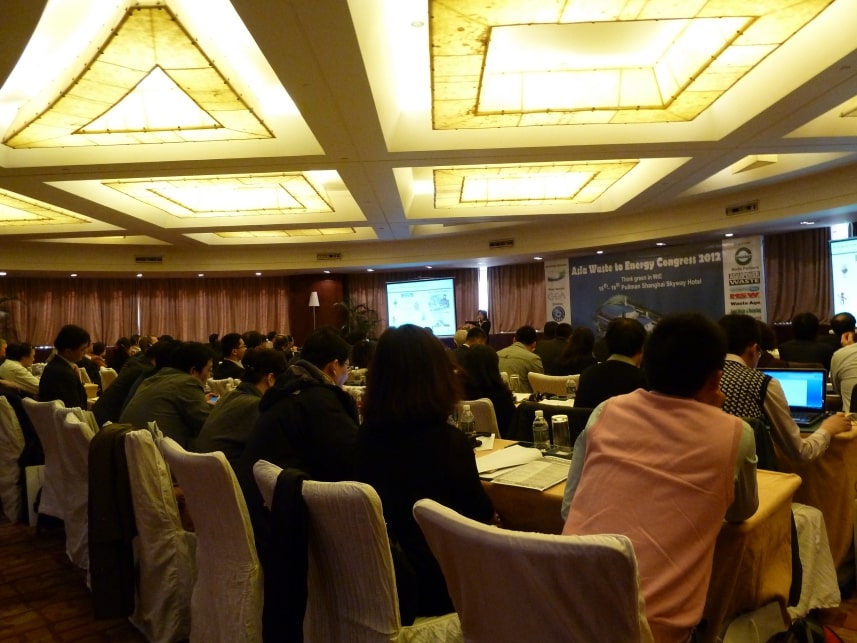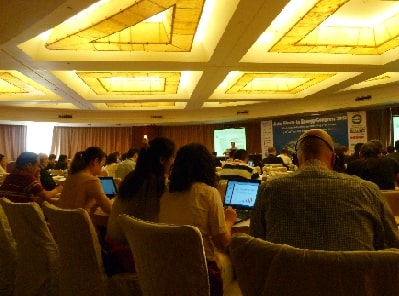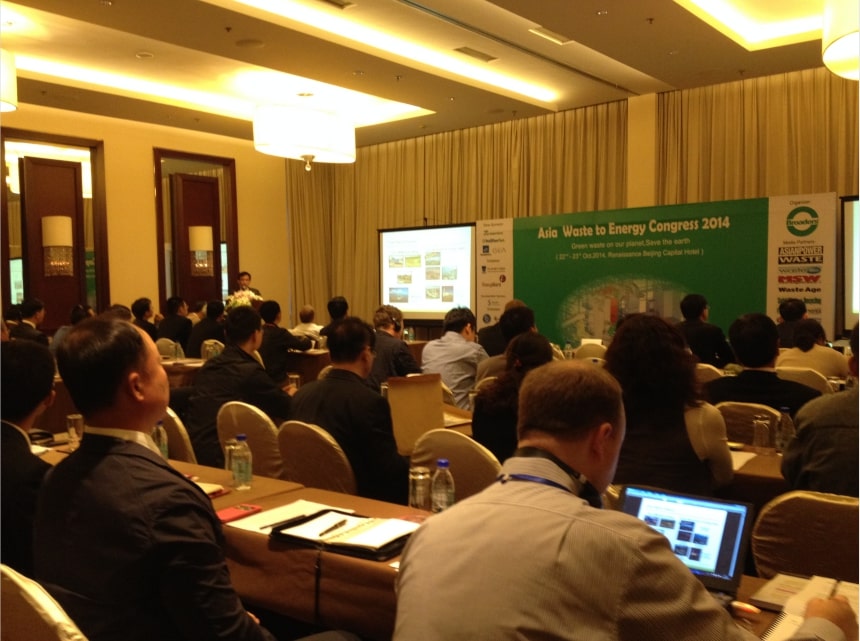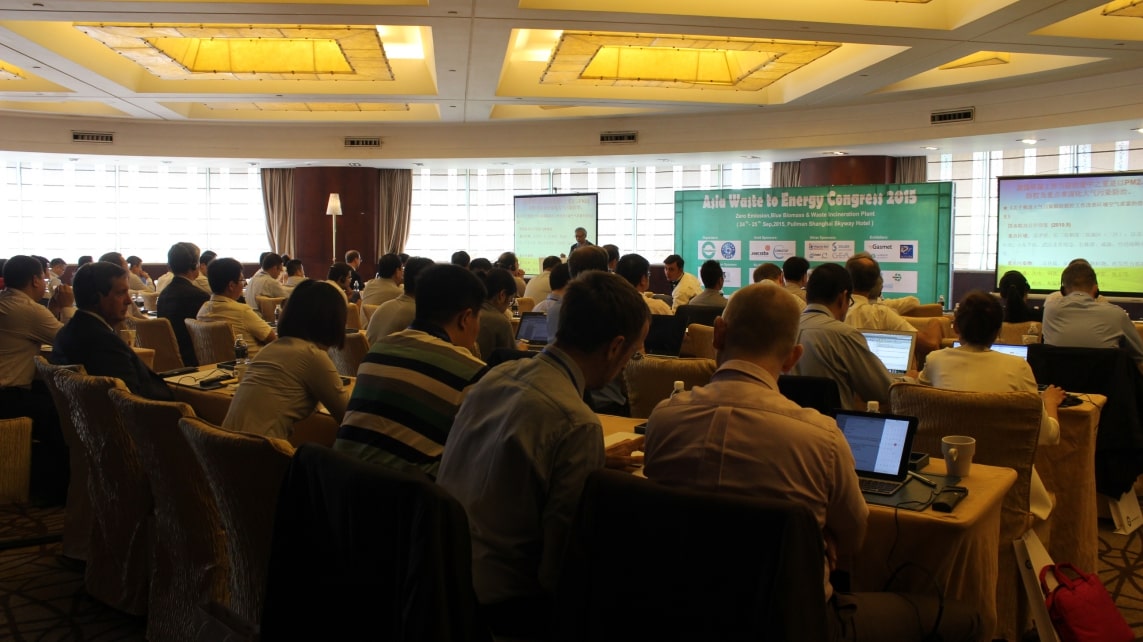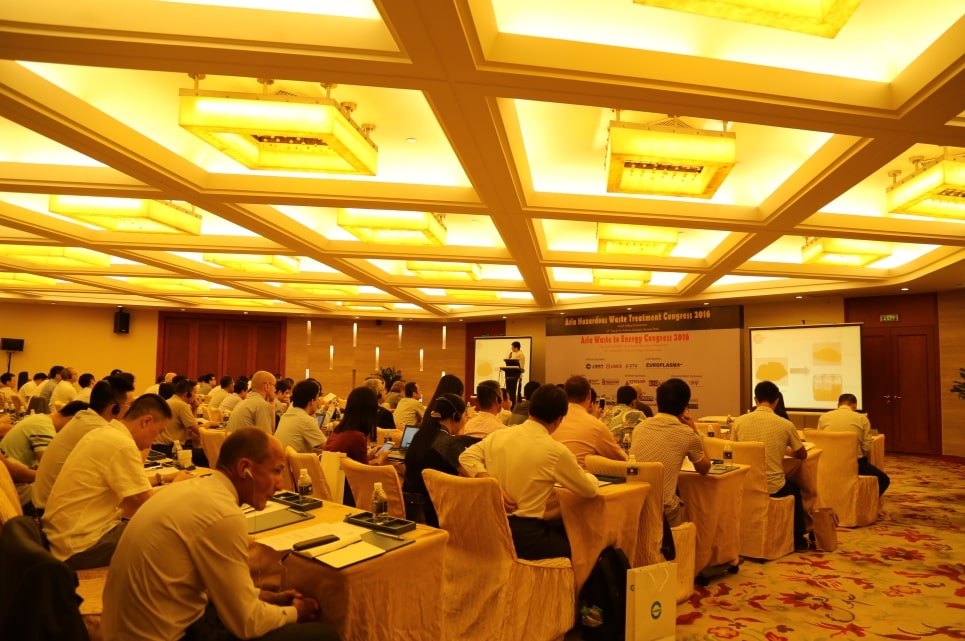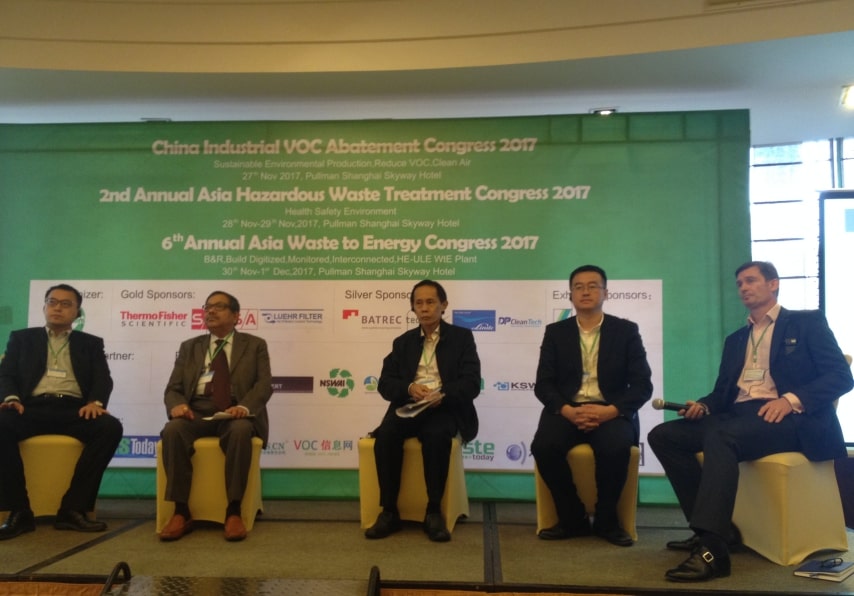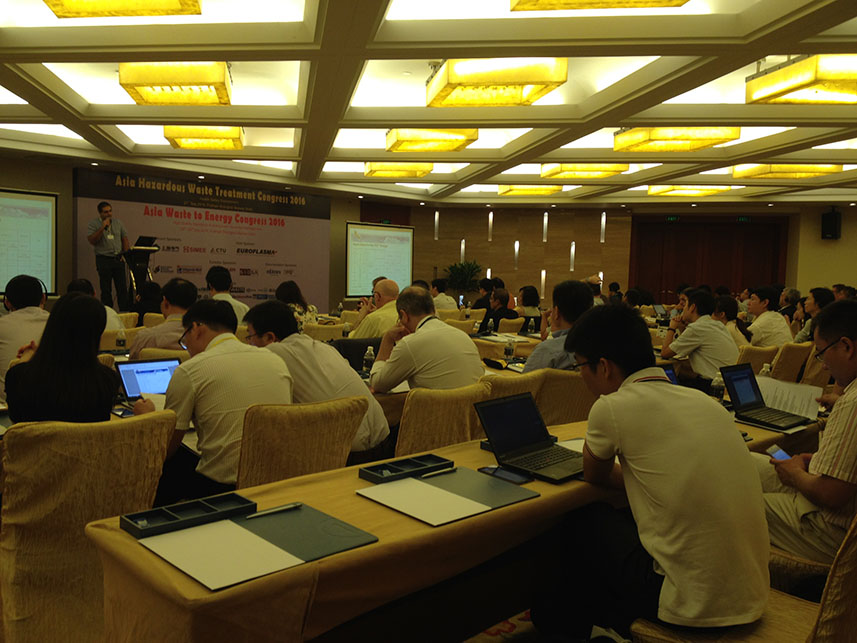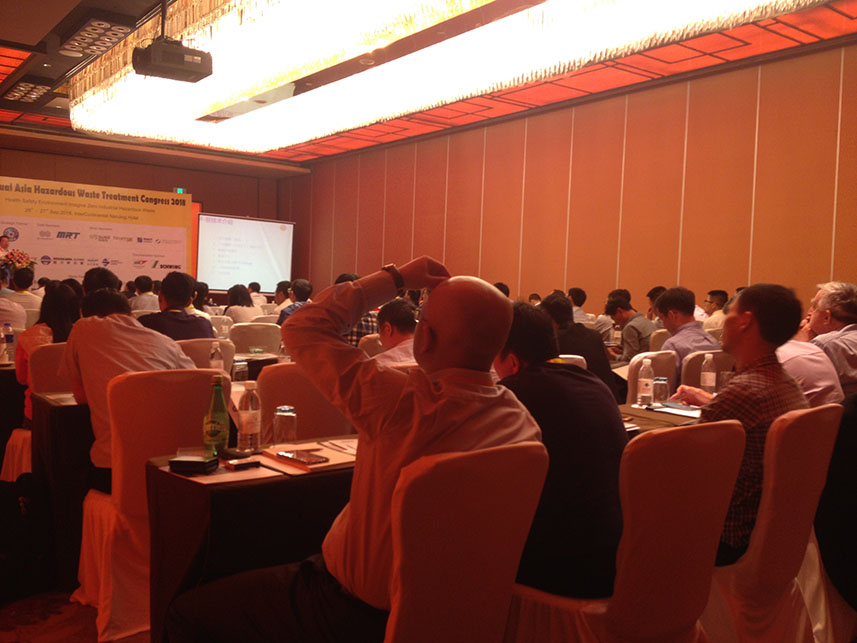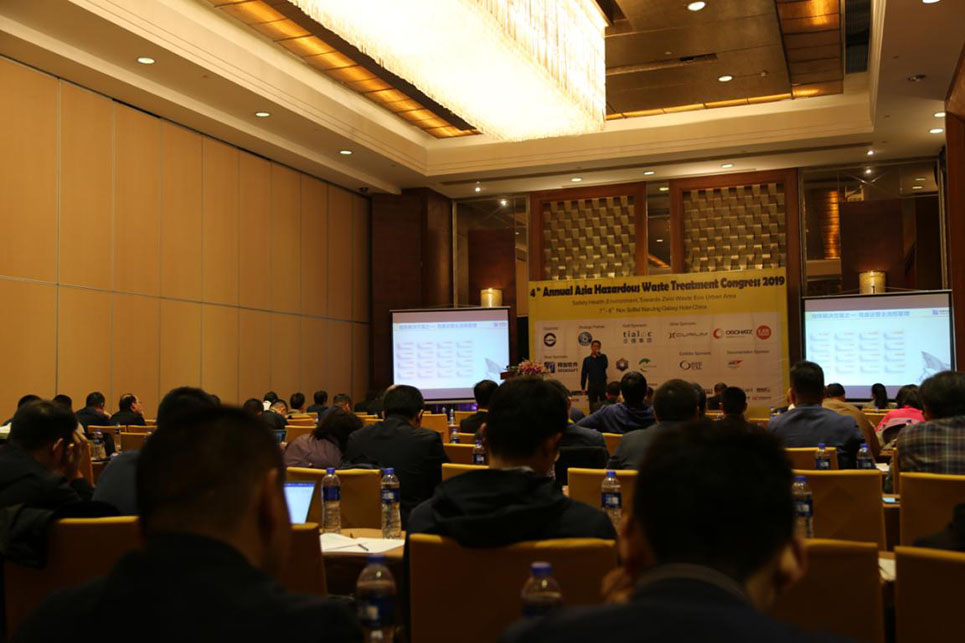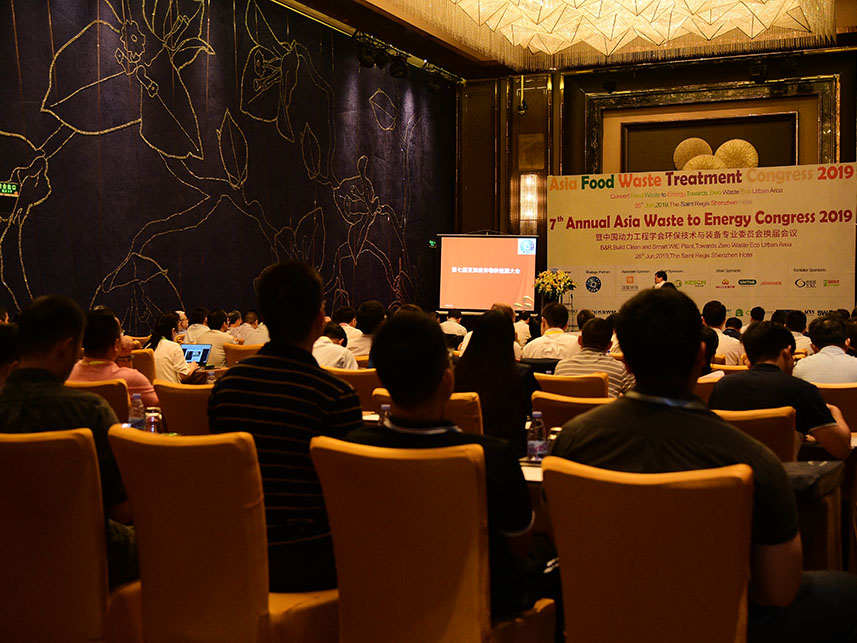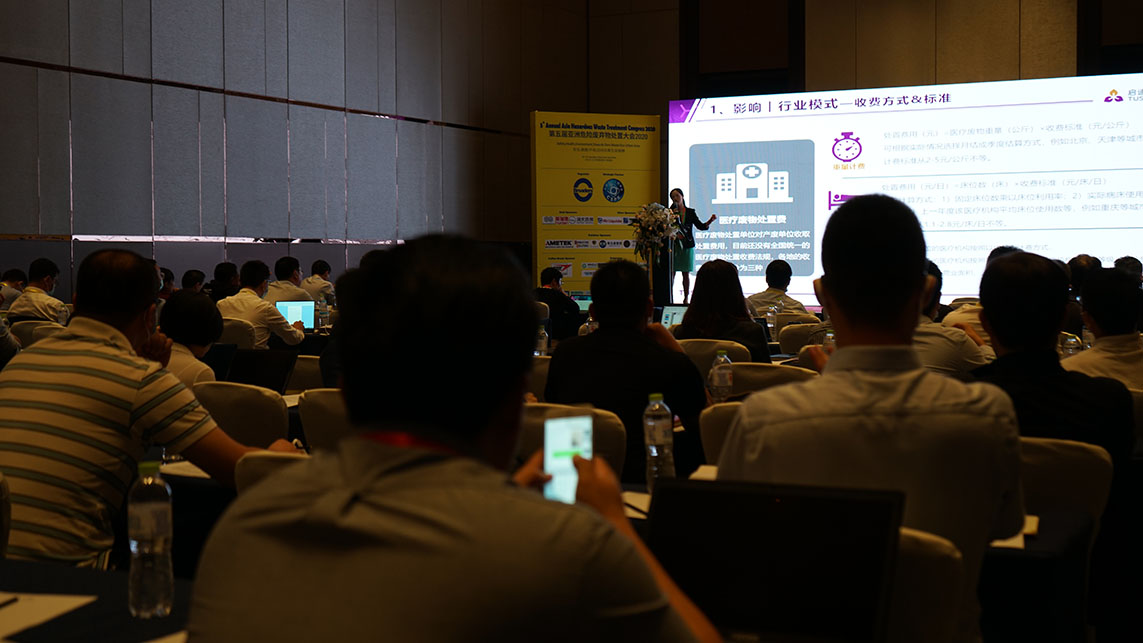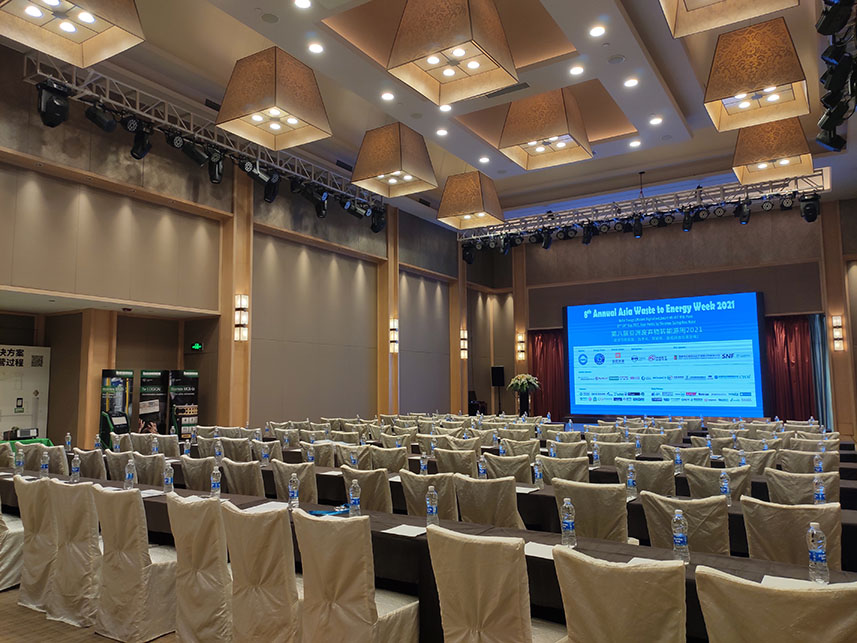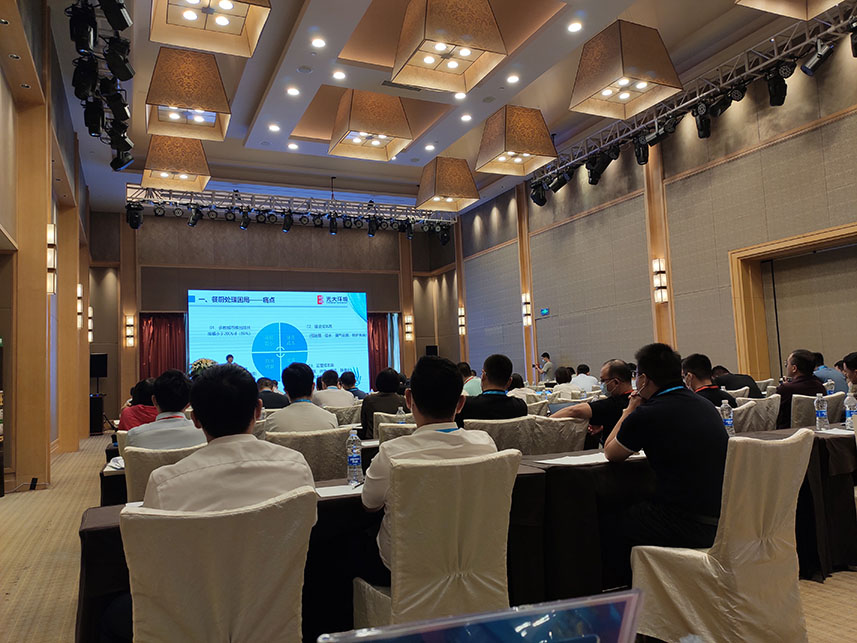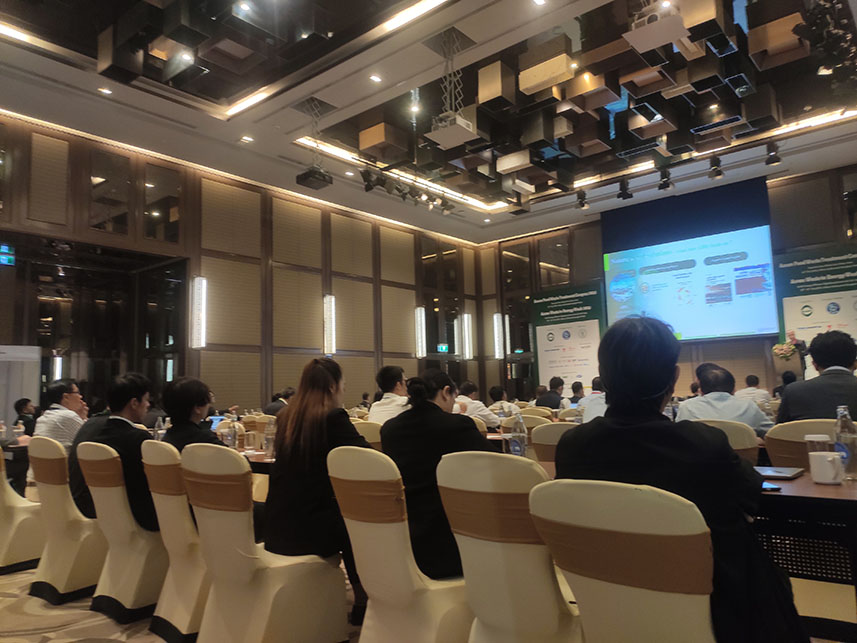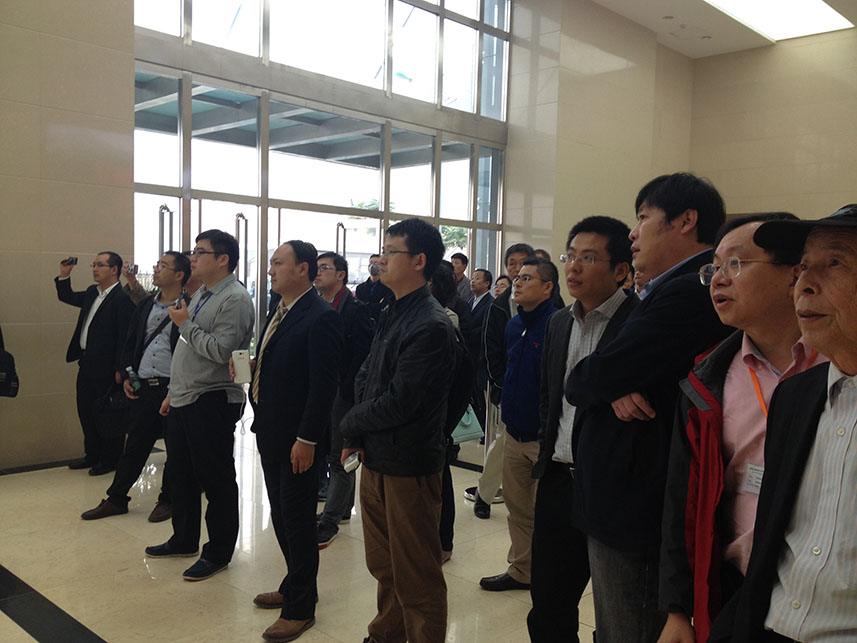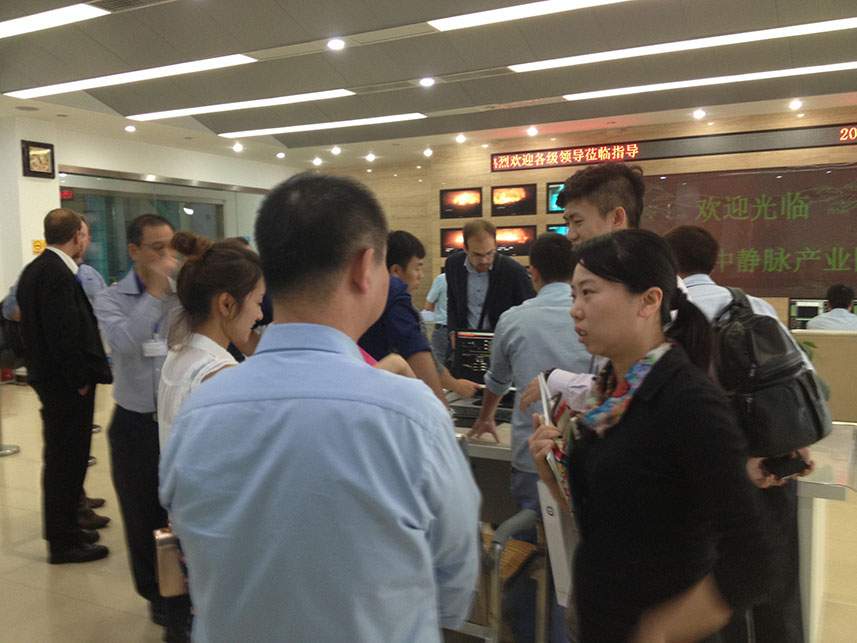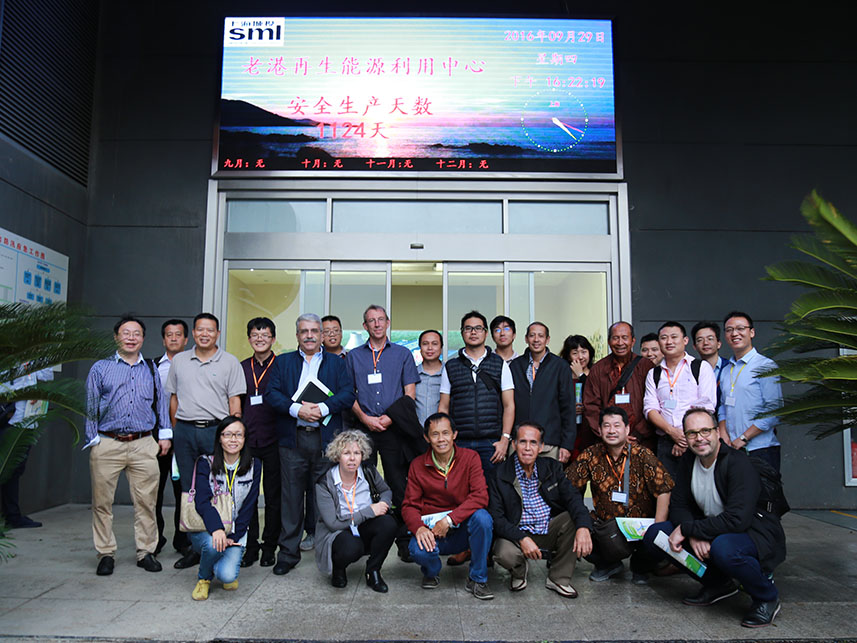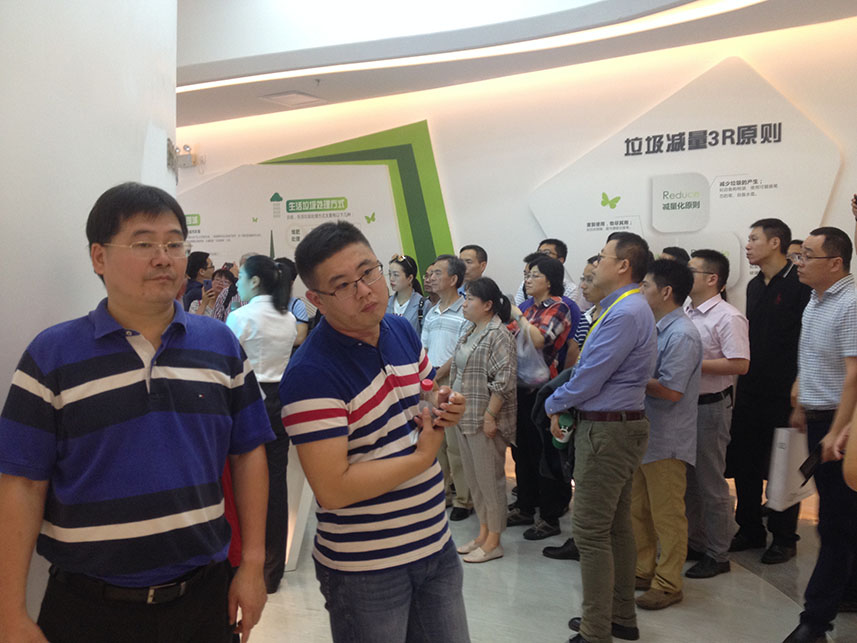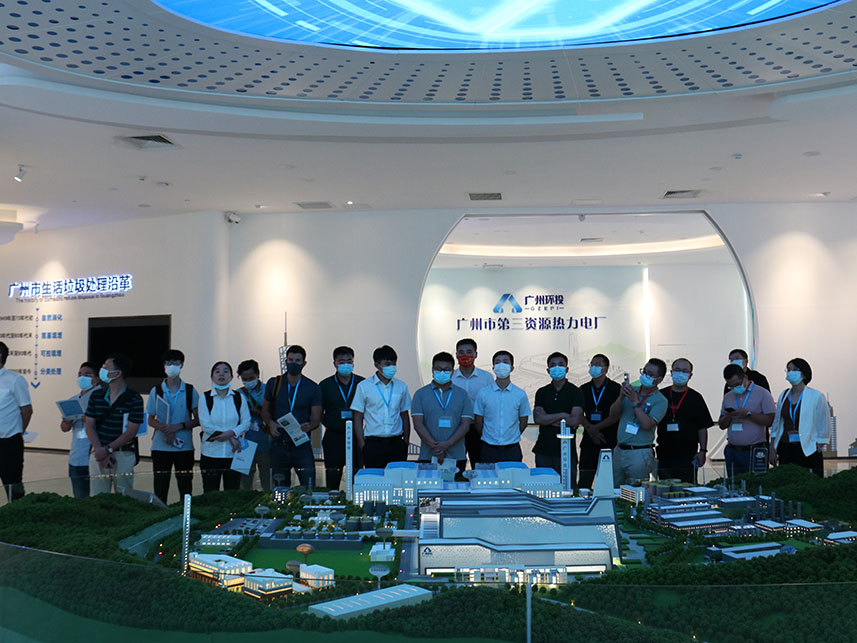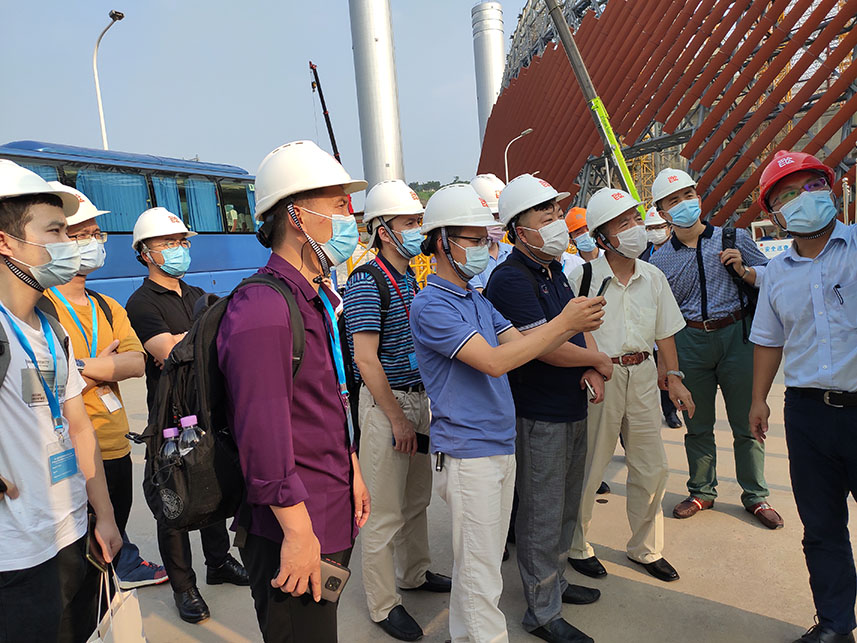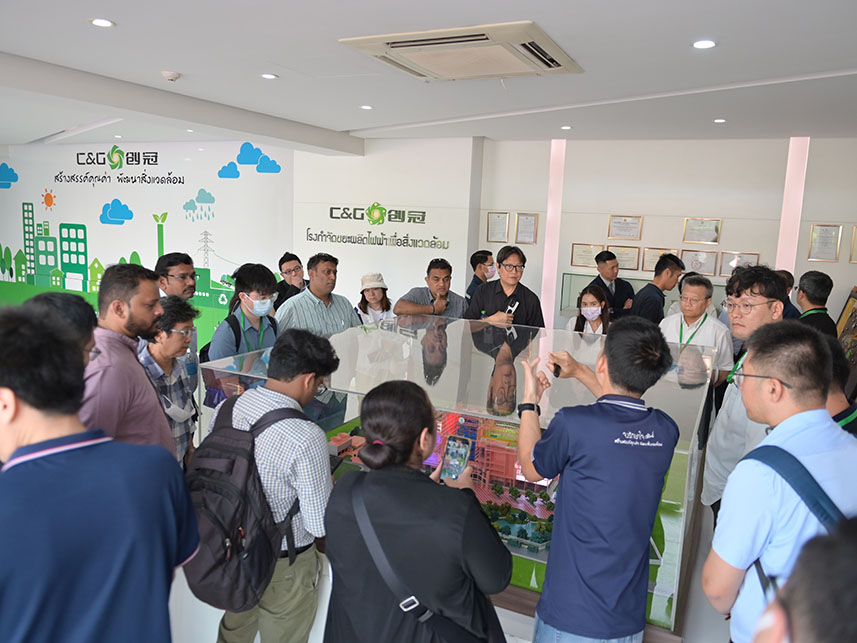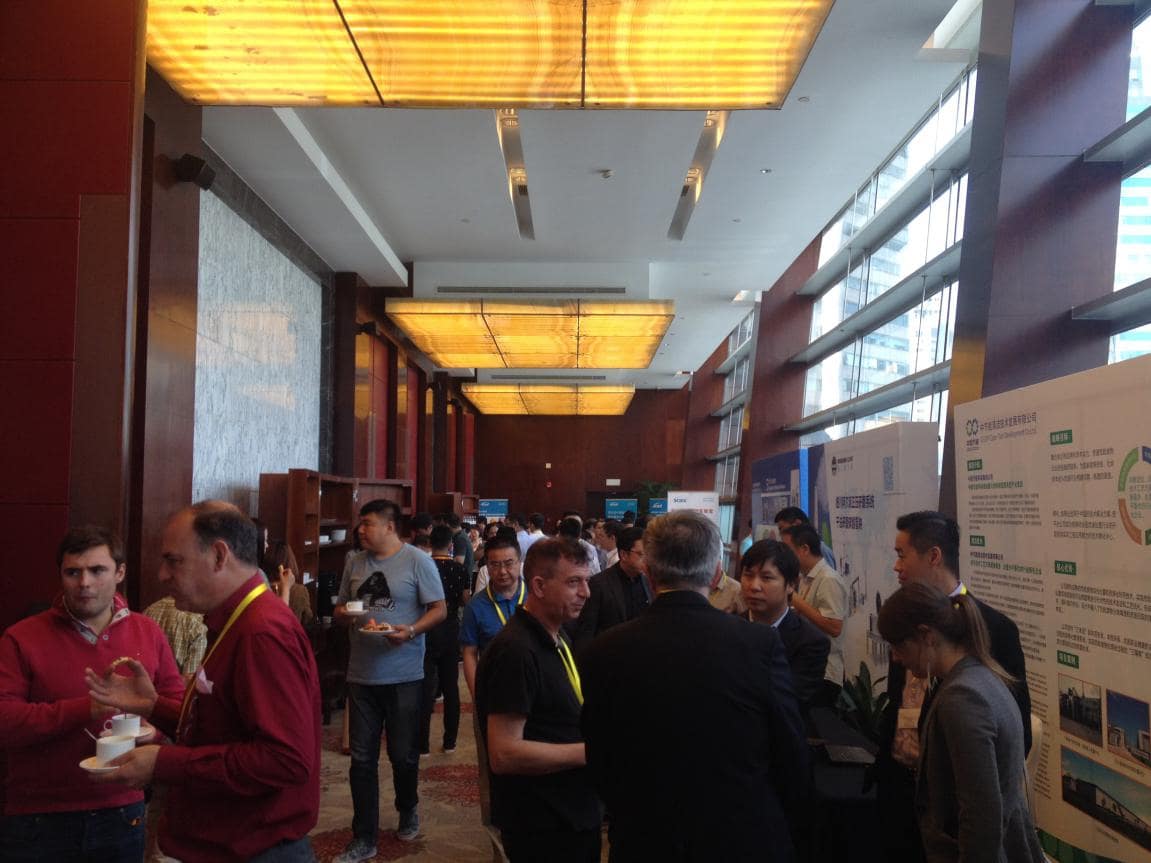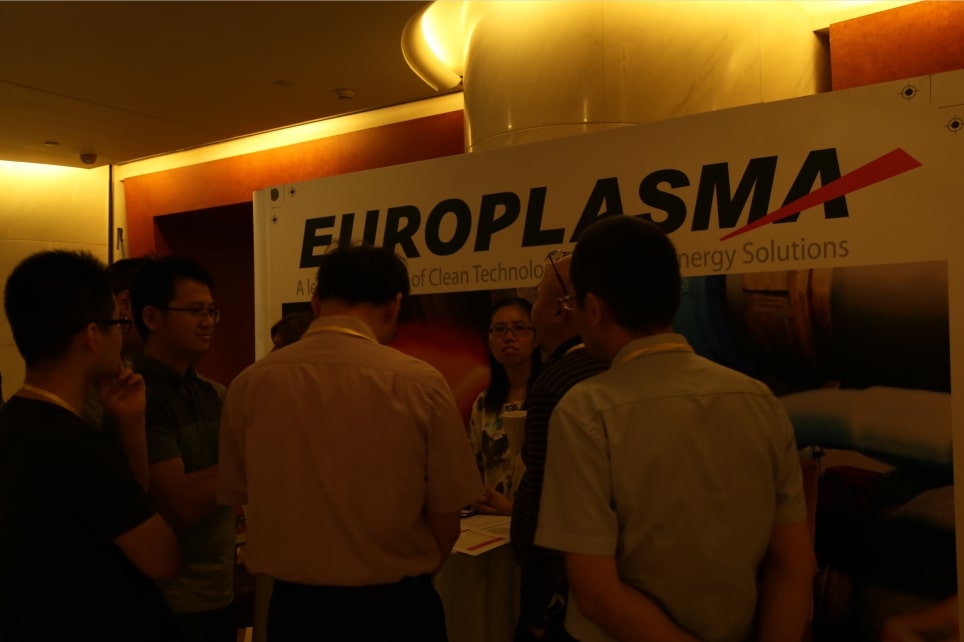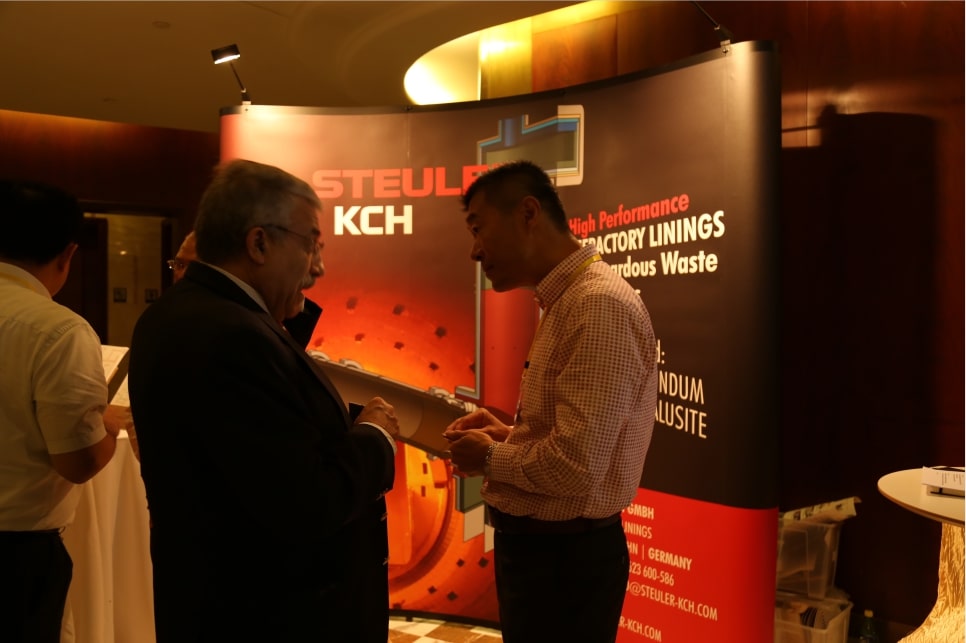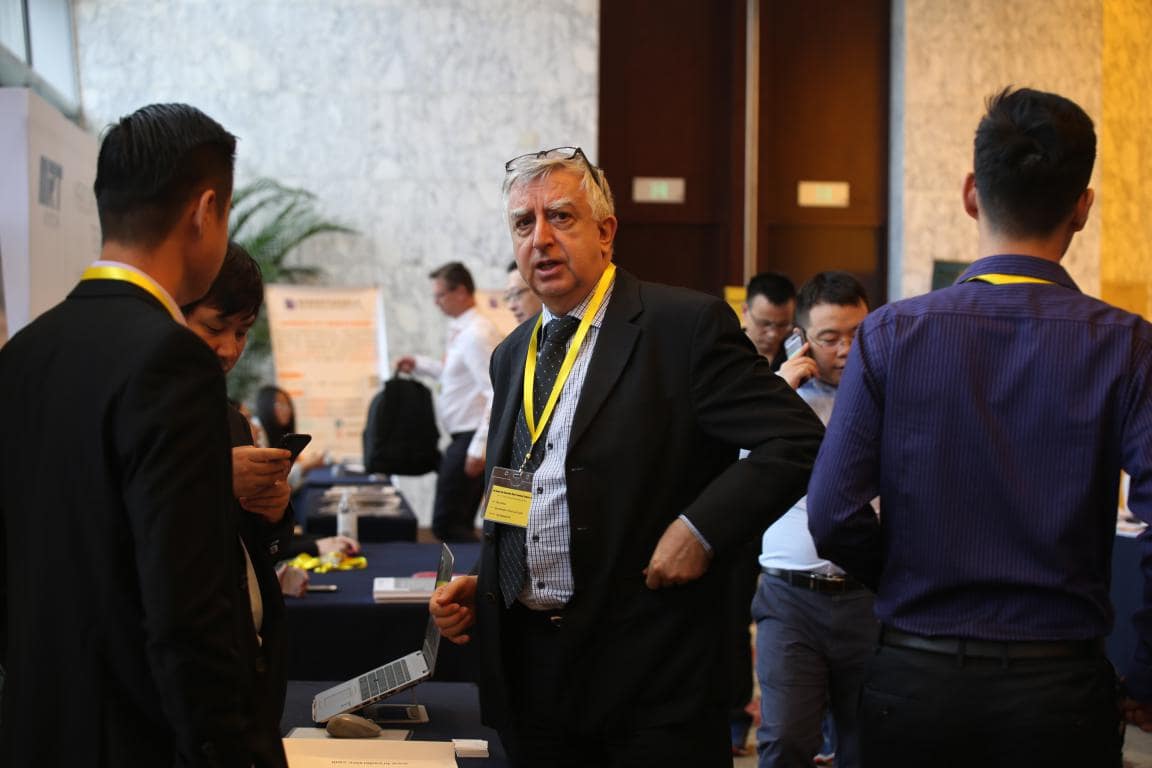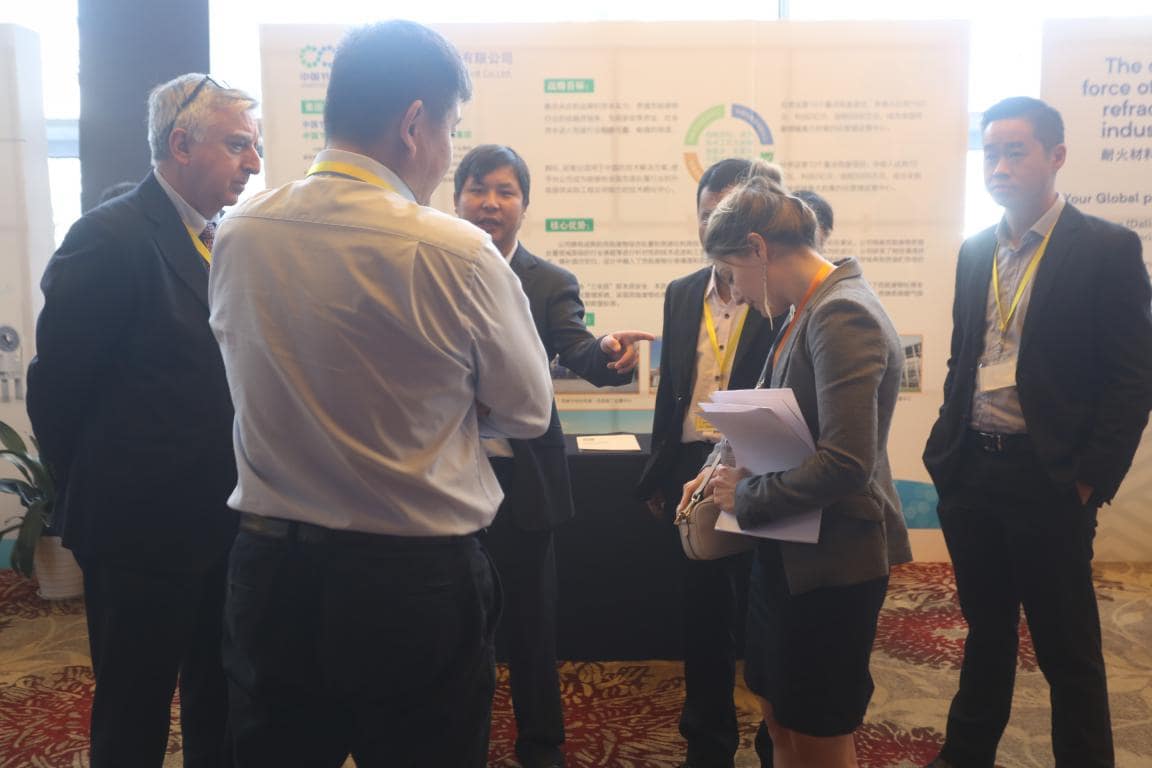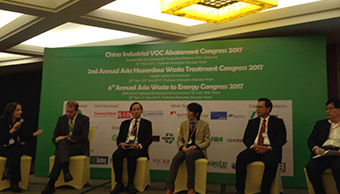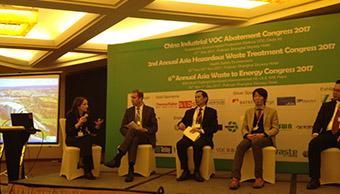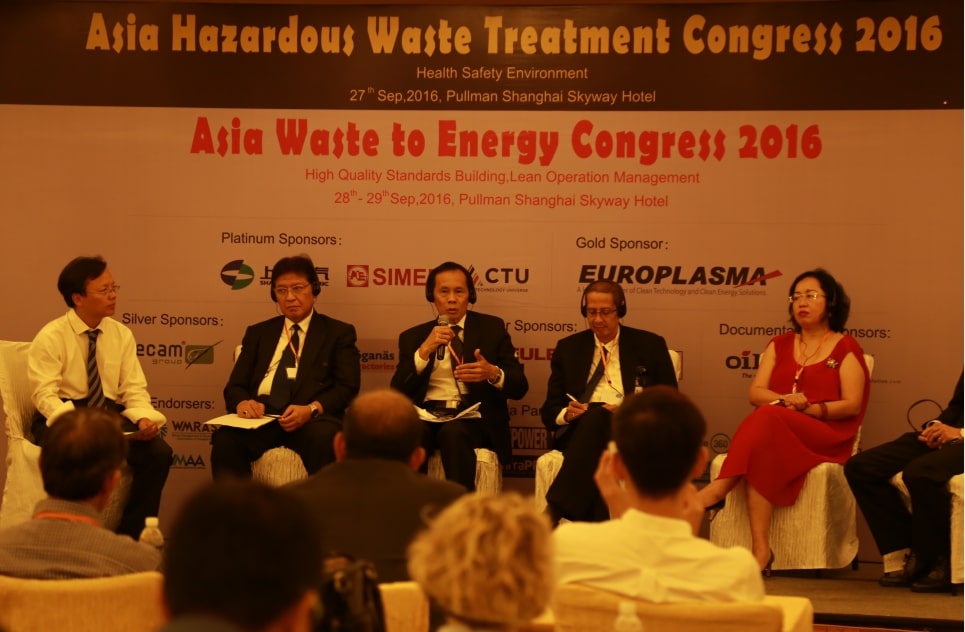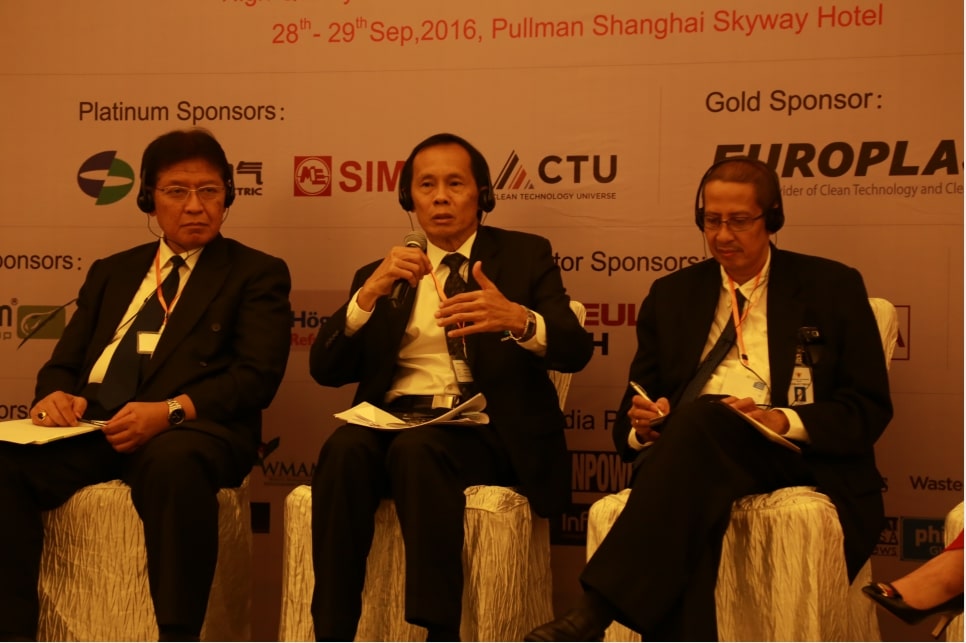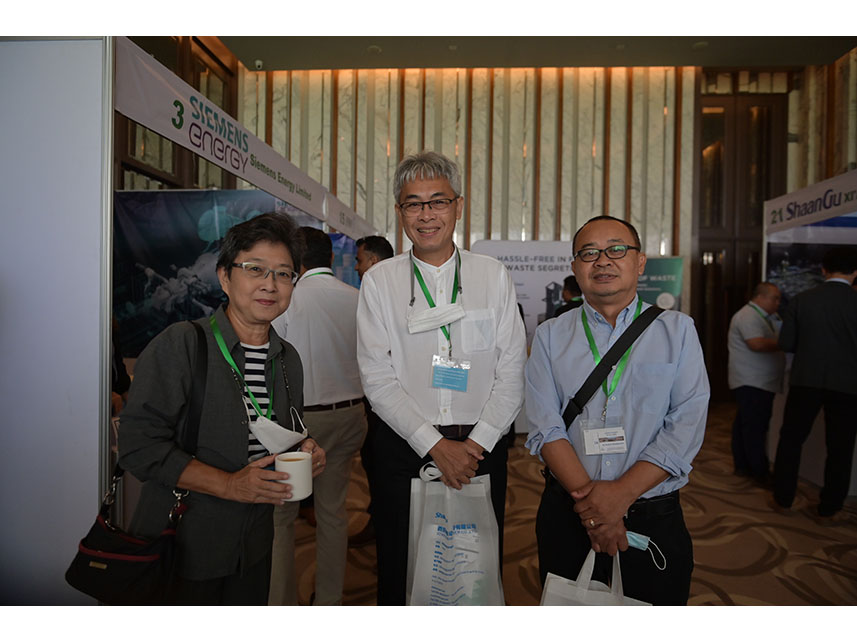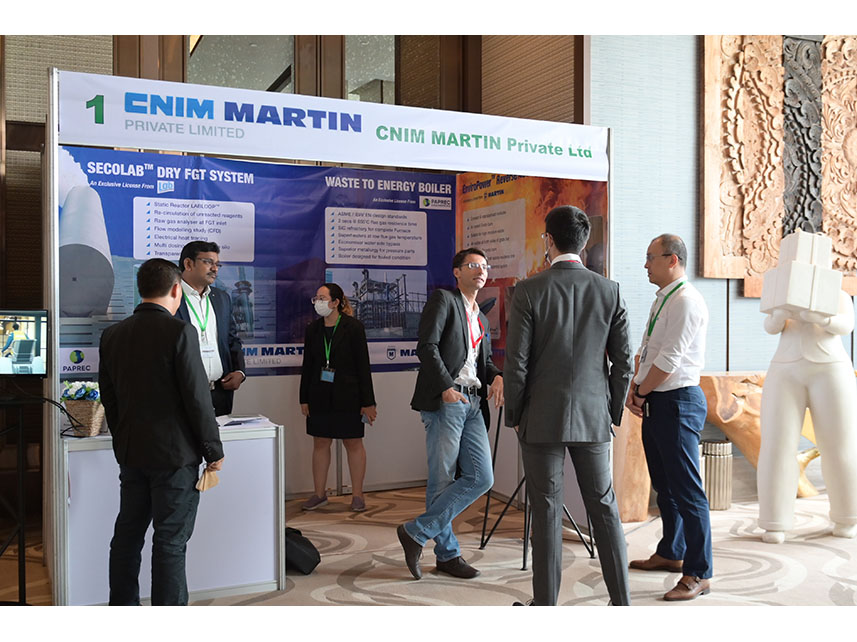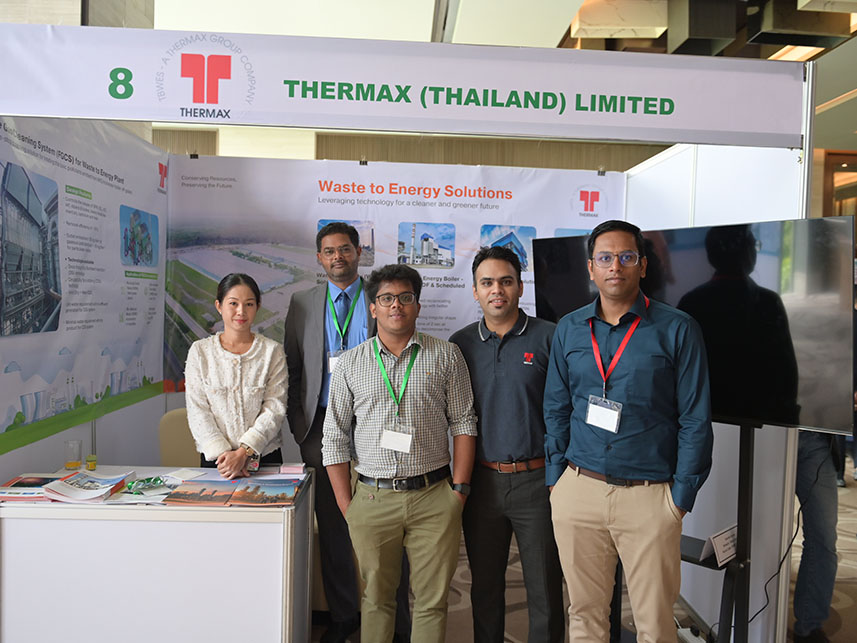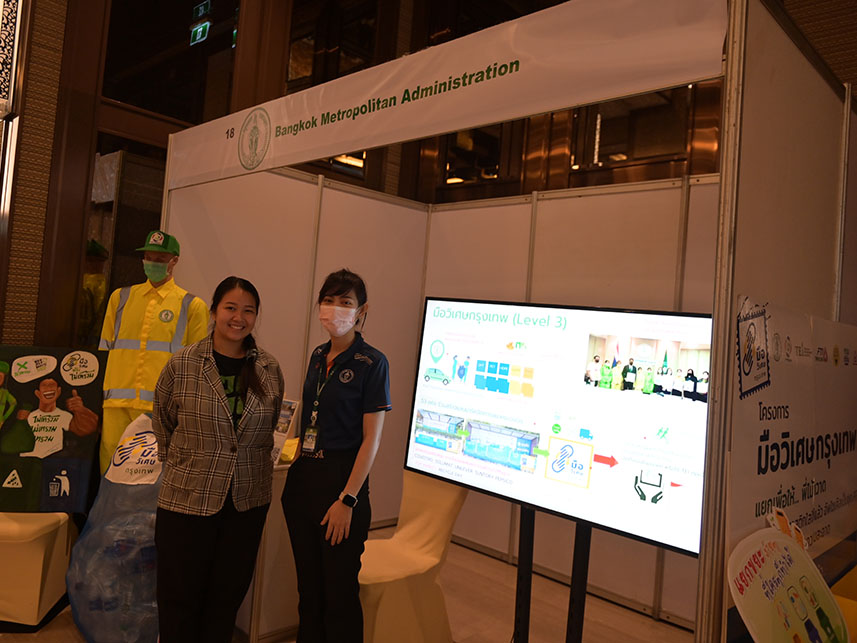Broaders solid waste event was originated from the urban waste incineration power generation technology application seminar held in Shenzhen in 2004. It was held in Tianjin and Shanghai in 2005 and 2006 respectively. It was upgraded to the Asia Waste to Energy Congress in 2012 and moved to ASEAN in 2023 as the ASEAN Waste to Energy Week in Bangkok, Thailand,ASEAN Waste-to-Energy Week 2024 in Saigon Vietnam. The conference attracted more than 4,000 delegates from more than 80 countries and regions including China, United States, France, Sweden, Austria, Finland, Norway, Iceland, Denmark, Poland, Czech Republic, Germany, Austria, Switzerland, Russia, Ukraine, United Kingdom, Ireland, Netherlands, Belgium, Italy, Spain, Portugal, Thailand, Japan, Singapore, South Korea, Malaysia, Australia, India, Indonesia, Philippines, Vietnam, United Arab Emirates, Iran, Lebanon, Canada, Sri Lanka, South Africa, Hong Kong, Taiwan, Macau etc attended the conference. Previous participants have visited Beijing Lujiashan Shougang Biomass Waste Incineration Power Plant, Suzhou Everbright Waste Incineration Power Plant, Shanghai Environment Laogang Waste Incineration Power Plant, Shenzhen Energy Yantian Waste Incineration Power Plant, Guangzhou Third Resource Thermal Power Plant,Shenzhen Energy Longgang Energy Ecological Park,Bangkok BMA C&G Waste-to-Energy Power Plant,Everbright International's Can Tho Waste-to-energy Project in Vietnam.
Asia Waste to Energy Congress 2012 was held successfully in Pullman Shanghai Skyway Hotel from 15th-16th Nov 2012
2nd Annual Asia Waste to Energy Congress 2013 was held successfully in Pullman Shanghai Skyway Hotel from 24th-25th Sep 2013
3rd Annual Asia Waste to Energy Congress 2014 was held successfully in Renaissance Beijing Capital Hotel from 22nd-23rd Oct 2014
4th Annual Asia Waste to Energy Congress 2015 was held successfully in Pullman Shanghai Skyway Hotel from 24th-25th Sep 2015
5th Annual Asia Waste to Energy Congress 2016 was held successfully in Pullman Shanghai Skyway Hotel from 28th-29th Sep 2016
6th Annual Asia Waste to Energy Congress 2017 was held successfully in Pullman Shanghai Skyway Hotel from 30th Nov-1st Dec 2017
7th Annual Asia Waste to Energy Congress 2019 was held successfully in Saint Regis Shen Zhen Hotel from 28th Jun-29th Jun 2019
8th Annual Asia Waste to Energy Week 2021 was held successfully in Four Points Sheraton Guang Zhou Hotel from 27th-28th Sep 2021
Inaugural Asia Hazardous Waste Treatment Congress 2016 was held successfully in Pullman Shanghai Skyway Hotel on 27th Sep 2016
2nd Asia Hazardous Waste Treatment Congress 2017 was held successfully in Pullman Shanghai Skyway Hotel on 28th-29th Nov 2017
3rd Asia Hazardous Waste Treatment Congress 2018 was held successfully in InterContinental Nanjing Hotel on 26th-27th Sep 2018
4th Annual Asia Hazardous Waste Treatment Congress 2019 was held successfully in The Sofitel Nanjing Galaxy Hotel on 7th-8th Nov 2019
5th Annual Asia Hazardous Waste Treatment Congress 2020 was held successfully in Hilton Jinan South Hotel on 24th-25th Sep 2020
Asia Food Waste Treatment Congress 2019 was held successfully in Saint Regis Shen Zhen Hotel on 26th June 2019
ASEAN Food Waste Treatment Congress 2023 was held successfully in Hilton Sukhumvit Bangkok Hotel on 16th Oct 2023
Asean Waste to Energy Week 2023 was held successfully in Hilton Sukhumvit Bangkok Hotel on 18th-20th Oct 2023
Asean Waste to Energy Week 2024 was held successfully in Pullman Saigon Centre Hotel on 14th-16th Mar 2024
The Broaders 21st Solid Waste Event Will be Scheduled on 27th Jun 2024 in Cairo Egypt
Arab League Solid Waste Management Summit 2024
Event Background
Egypt's annual total wastes are estimated about 100 million tons (Farag, 2019a). The main streams of waste in Egypt are: agricultural waste (34%), cleansing of canals and irrigation networks (28%), MSW (23%), construction waste (6%) and industrial waste (5%) (Chemonics Egypt and Cleantech Arabia, 2018). Statistics show that the total annual MSW has amplified above 36% since 2000 with an estimated 2–3% growth per year (Ministry of Environment, 2016; Ibrahim and Mohamed, 2016). The average generation rate of SW for Egyptians ranges from 0.3 kg/capita/day in rural areas to 1.0 kg/capita/day in large cities with establishments like resorts and hotels having high rates of 1.5 kg/capita/day (Ministry of Environment, 2001). Accordingly, the average rate of waste generation is 0.67 kg/capita/day compared to the global average of 0.74 kg/capita/day and the regional average of 0.81 kg/capita/day (Kaza et al., 2018).
According to waste statistics by the Central Agency for Public Mobilization and Statistics (CAPMAS) (2018) 87,747 thousand ton of waste were disposed of in Egypt in 2018 with 4,447 thousand tons of waste in Cairo alone. Table 1 shows the quantities of waste disposed in 1,000 ton between 2012–2018. Based on associating waste growth rates with the steady population growth of 2.5% it can be predicted that MSW reached 89.89 million tons in 2019, 92.137 million tons in 2020 and 94.44 million tons in 2021 without adding the impact of Covid-19 pandemic which will inflate this number drastically.
Around 65% of MSW in the country is generated in urban areas and 35% in rural areas. In terms of the efficiency of waste collection, it varies drastically ranging from 90% in high-income locations to 10% in rural areas (Ministry of Environment, 2001). According to the CAPMAS around 44.8% of households dispose their waste in the street while the remaining 55.2% dispose it by private waste collectors and companies (Egypt Today, 2018). There are a few landfills in the capital of each governorate and in some large cities which are properly managed; otherwise, informal dumpsites exist in every town and village in Egypt.
In terms of collection, an average 60–69% of the total MSW generated is collected while the remainder accumulate in streets and residential areas; of the collected MSW 10–15% is recycled, 7% is composted, 7% is disposed in sanitary landfills while the rest is disposed in open dumpsites or is openly burned (Ministry of Environment, 2016; Ibrahim and Mohamed, 2016). Egypt has around 84 open dumps, 7 unspecified landfills and around 1,500 informal waste collection companies with more than 360,000 workers who usually work in bad conditions (Hammad, 2019; Kaza et al., 2018). According to the World Bank 1.5% of the gross domestic product (GDP) is lost in the country (about $5.7bn a year) due to nonrecycling and utilization of waste adding to that the cost of handling waste and its environmental impact (Hammad, 2019).
MSW composition in Egypt (national averages) shows the domination of organic waste with 55–60%, followed by plastics 13% [1], paper/cardboard 10%, glass 4% and metal 2%. Rural areas have higher percentages of organic waste than urban areas at 70–80%, followed by plastic waste 6%, paper and cardboards 4%, glass 2%, metals 1% and others 6% (Chemonics Egypt and Cleantech Arabia, 2018).
In line with the waste hierarchy, if reusing and recycling are not feasible, eco-friendly energy recovery techniques such as WtE are to be used. In the Egyptian context, the second and ninth pillars of the Egyptian SDS 2030 are particularly important for the development of the WtE sector in Egypt as they demonstrate that within the SDS 2030 vision an innovative sector like the WtE that provides a renewable energy source with an efficient resource management that protects and enhances environmental quality is one that is needed and highly encouraged.
The potential of WtE application depends on the specific economic, social and political conditions of the country. Middle Income countries like Egypt are characterized with a high demand for energy coupled with a high increase in waste generation especially MSW with unsustainable WMS. Accordingly, WtE technologies have a high potential if it adheres to the needs of the country and is supported with strong investment incentives and suitable regulatory framework for WtE to properly operate taking into account that the selection of the WtE technology depends mainly on the nature of the waste stream (World Energy Council, 2016).
By 2050, Egypt plans to raise the share of electricity from renewables and waste to 55% of the total output of energy (Hammad, 2019). The infant WtE sector can greatly contribute in realizing this goal. Given that the Egyptian WtE sector is still in its initiation phase it has to be endorsed by the government – through proper regulations and an enabling environment to encourage investment in the sector.
The WtE sector in Egypt is regulated by Feed-in-Tariff (FiT) Decree No.41 of 2019 which stipulated the rate upon which the Egyptian government will purchase electricity from WtE projects (thermal facilities, landfill biogas (LFG), and waste water treatment sludge). The FiT has two rates. First, a rate of 1.4 Egyptian pound (EGP)/Kilowatt-hour (kWh) for electricity produced from MSW or LFG sold to the national grid. The second rate is 1.03 EGP/kWh for electricity sold to the national grid generated from waste water treatment plants sludge. The FiT is fixed over a 25-year contract held between the governorate and the WtE facility located in it. The land for the facility is allocated by the governorate on a concession term for the duration of the electricity purchase agreement between the governorate and the electricity distribution company. It is stipulated that the governorate is responsible for supplying the needed quantity of waste to produce electricity for the WtE company with no cost. The FiT set the total installed capacity of electric power production plants from WtE at 300 megawatt (MW) during the first five years from the decree. In addition, the station has to have a maximum capacity of 20 MW and a minimum capacity of 500 KW to be connected to the medium voltage network (11 or 22 kilovolt (kV)) with the station owner bearing the cost of connecting the station with the nearest medium voltage access point (ARE, 2019; Waste Management Regulatory Authority (WMRA), 2019; Farag, 2019a, b).
With an average of 0.67 kilograms of generated waste per capita per day in Egypt and through the utilization of WtE technologies, this waste could generate 7.5 terawatt hours (TWh) of electricity per day with the prospect of diverting one of the utmost challenging waste streams to a useful use (Nasr, 2019; Chemonics Egypt and Cleantech Arabia, 2018). The selection of the WtE technology depends mainly on the volume and nature of the waste stream. An important determinant of the amount of generated energy is the calorific value (CV) of waste, which shows the amount of energy that can be generated from each type of waste (World Energy Council, 2016). Table 2 shows the CV of different waste fractions.
There are diverse options for utilizing energy from MSW such as district heating and electricity. The paper is only considering obtaining electricity from MSW as Egypt does not have the infrastructure for connecting district heating. Therefore, the paper calculated the potentially obtainable electricity from MSW through considering the physical composition of Egypt's MSW following Chen (2018) and Ouda et al. (2017). The potential of energy recovery from waste can be estimated using its CV as follows:
Where NCV is the net calorific value/lower heating value (LHV) in Mega Joule (Mj/kg), W is the dry weight of waste (ton/year), 3,600 is a conversion factor.
Table 3 shows the energy recovery potential from each waste stream. Accordingly, Egypt has the potential to produce 28,060 Gigawatt hours (GWh/y) of electricity by utilizing WtE incineration technologies which is approximately 3.5 times the amount of electricity produced by the high dam in Aswan.
The WtE sector in Egypt is still in its developing stage. However, some small scale WtE plants are in operation in the country. For instance, numerous cement plants convert industrial and agricultural waste into fuel to power their plants (Nasr, 2019). In addition, following the cabinet approval of the WtE FiT, a number of proposals to construct WtE projects were directed to the ministries of environment and electricity from foreign and Arab investors with the value of $2bn (Farag, 2019b).
Waste-to-energy projects offer numerous benefits for Egypt. First it provides a sustainable solution to the persisting waste problem with its adverse economic, social, environmental and health effects. Moreover, Egypt has a high and growing energy demand which WtE projects can help fulfill through its main outputs.
Apart from electricity and heat, WtE projects can generate fuels that can be used in transportation (World Energy Council, 2016). This can lead to a drastic decrease in the fuel consumption by vehicles leading to both economic and environmental gains. Furthermore, the use of biomass in heavy industries like cement has multiple advantages including solving the challenges associated with biomass, decreasing emissions and is considered a viable energy source (Messenger, 2016).
From an economic perspective, the WtE sector is expected to open up new investment opportunities and encourage foreign investment as international financial and technical feasibility studies reveal a return of about 18% through investing in the SW sector (Hammad, 2019). Additionally, The WtE sector has a high rate of job creation due to its nature which requires a broad range of direct jobs. In view of that, it generates job opportunities for the unskilled and semiskilled labor in waste accumulated areas. Hence, these projects can help enhance the livelihood of economically stressed communities in the country (Chemonics Egypt and Cleantech Arabia, 2018).
On October 13, 2020, President Abdelfattah Elsisi ratified Egypt’s new Waste Management Law (# 202/2020), which was approved by the House of Representatives on August 24, 2020. The law is Egypt’s latest attempt to regulate the waste management industry by creating a new regulatory authority to oversee proper waste management and recycling practices, and develop a national strategy to improve waste disposal and recycling.The law seeks to provide investment incentives and other measures to encourage garbage collectors, small companies, private contractors, and recycling centres to join the formal economy.The Law aims to create a waste management regulatory authority (WMRA) to oversee proper waste management and recycling practices.WMRA will be in charge of creating a national strategy to tackle the issue of waste management.A national strategy was developed at the state level.The Government of Egypt formed a national committee to study the various aspects related to the conversion of waste to energy. The committee will set the technical and financial controls necessary for contracting and conducting the technical evaluation of related projects.Some collected quantities of garbage were allocated, which reached about 20%
of the collected municipal waste, equivalent to one million and a half tons annually, to be transformed into energy.The Ministry of Military Production signed partnership protocols with two companies to create factories for converting waste to energy.
Egypt’s entire electricity consumption was 204.1 TWh in FY 2020/21.The government’s plan is for WtE projects to use 4.2 million tonnes of waste to generate up to 300 megawatts (MW) of electricity by 2025.
Waste management has long been a chronic environmental challenge for Egypt. The Sustainability Development Strategy: Egypt’s Vision 2030 identified pollution reduction and integrated waste management as strategic objectives, with goals to reduce pollution and maximize resources by exploiting solid waste (with a focus on municipal solid waste). Egypt also has large quantities of agricultural waste that could be used to secure bioenergy.
When Prime Ministerial Decree 41 of 2019 set a feed-in tariff (FiT) rate of EGP 1.40 per kWh for WtE projects. The FiT is paid in local currency and will remain in place for 25 years. The Ministry of Electricity and Renewable Energy covers 75% of the tariff owed and the governorate where the WtE project is located pays the remaining 25%.
Law 202 of 2020 for regulating waste management was established to be an inclusive law to enhance waste management in Egypt. It integrated the concept of sustainable development for the first time in waste related regulations in Egypt. Accordingly, it dissolved WMRA and replaced it with a new one transferring all its responsibilities, liabilities and employees to the new one. In addition, law 202 encompassed important articles that were missing from previous laws such as Articles 15 and 16 which stipulated that the producer or owner of waste should follow the waste hierarchy and shall bear all costs related to the application of environmentally safe IWMS. Moreover, open incineration was banned in Article 20 and Article 40 stipulated that all open unregulated landfills are to be closed within two years from the issuance of the law. Article 25 stipulated that the prime minister in coordination with the electricity and renewable energy minister shall set a feed-in-tariff (FiT) for electricity from WtE projects according to technical and economic studies to reach the value that would encourage investment in this field. The law also stipulated multiple penalties for the violators of the law articles. Most notably, article 32 in the law established new bodies called municipal waste integrated management units (MWIMU) which are entities responsible for integrated management of municipal waste (ARE, 2020). The examination of the long anticipated Law 202 reveals that although it called for a proper IWMS and integrated WtE projects as part of waste handling processes, there is no significant difference regarding WMRA's roles and responsibilities from the previous regulation to guarantee the new authority's performance and ensure its success in managing and reforming the waste sector.
In an effort to enhance the current deteriorating solid waste management system (SWMS) some initiatives were recently taken by the government including a plan executed by the ministry of environment (MoE) to collect the accumulated waste in some governorates like Alexandria, Port Said and Ismailia and regulating the dumpsites surrounding Cairo to decrease self-combustion of waste in these sites (The Ministry of Environment, 2018a). Another initiative was the launch of an application called “Dawar” in some districts in Cairo to be further expanded across Egypt that permits users to capture and upload pictures of streets containing waste to allow the application to find the location through global positioning system (GPS) and direct a team to clean it (Egypt Today, 2018). Another initiative to sort waste from the source began in some areas in Cairo such as 6th of October, and New Cairo and some cities including Alexandria and Delta. This waste sorting process categorizes waste into three types: paper, metal, and plastic (Hammad, 2019). In addition, an electronic system for waste monitoring has been applied in September 2019 by the MoE in seven cities: Cairo, Alexandria, Gharbia, Giza, Qena, Assiut and Kafr El-Sheikh (Egypt Today, 2019). Moreover, a green national initiative was adopted to decrease and limit the use of plastic bags and offer alternatives to them in an attempt to endorse sustainable development, convert to a green economy and incorporate sustainable consumption and production (SCP) in Egypt (The Ministry of Environment, 2018a, 2018b). Finally, a government program was set to improve the SWMS to raise waste collection, management and transportation efficiency to 80% –up from 20% in 2015– and recycling to 25% by 2030 (The Ministry of Environment, 2018a).
High-income Middle Eastern countries like Saudi Arabia, UAE, Qatar, Bahrain and Kuwait are counted as world’s largest waste producers in terms of per capita waste generation which is more than 2kg per day in some countries. The urban waste generation from the region has now crossed 150 million tons per year which has forced policy-makers and urban planners to seriously look for sustainable waste management solutions, including recycling and waste-to-energy.In addition, huge quantity of sewage sludge is also generated in the Middle East which presents a serious problem due to its high treatment costs and risk to environment and human health. On an average, the rate of wastewater generation is 80-200 litres per person each day and sewage output is rising by 25 percent every year across the region.Municipal solid waste is a very good source of biomass in the Middle East. Municipal solid waste is comprised of organic fraction, paper, glass, plastics, metals, wood etc. Almost 50% of the solid waste is contributed by organic matter.
MSW can be converted into energy by conventional technologies (such as incineration, mass-burn and landfill gas capture). Municipal solid waste can also be efficiently converted into energy and fuels by advanced thermal technologies, such as gasification and pyrolysis.At the landfill sites, the gas produced by the natural decomposition of MSW is collected from the stored material and scrubbed and cleaned before feeding into internal combustion engines or gas turbines to generate heat and power. In addition, the organic fraction of MSW can be anaerobically stabilized in a high-rate digester to obtain biogas for electricity or steam generation.Anaerobic digestion is the most preferred option to extract energy from sewage, which leads to production of biogas and organic fertilizer. The sewage sludge that remains can be incinerated or gasified or pyrolyzed to produce more energy. In addition, sewage-to-energy processes also facilitate water recycling.The variety of technological options available means that waste-to-energy can be applied at a small, localized scale primarily for heat, or it can be used in much larger base-load power generation capacity whilst also producing heat. Waste-to-energy conversion can thus be tailored to rural or urban environments in the Middle East, and utilized in domestic, commercial or industrial applications in the entire region.
The world’s dependence on Middle East energy resources has caused the region to have some of the largest carbon footprints per capita worldwide. The Middle East region is now gearing up to meet the challenge of global warming, as with the rapid growth of the waste management sector. During the last few years, UAE, Qatar and Saudi Arabia have unveiled multi-billion dollar investment plans to improve waste management scenario. In particular, the establishment of Domestic Solid Waste Management Centre in Qatar has catalyzed public interest in deployment of waste-to-energy systems in the Middle East.
Energy from MSW is rapidly gaining worldwide recognition as the fourth ‘R’ in sustainable waste management system – Reuse, Reduce, Recycle and Recover. A transition from conventional waste management system to one based on sustainable practices is necessary to address environmental concerns and to foster sustainable development in the region.
Gulf states move on waste-to-energy projects,Waste-to-energy projects are providing GCC countries with a way to reduce landfill waste and produce power.As volumes of waste continue rise sharply in line with increasing populations – governments across the region are seeking to invest in waste-to-energy (WtE) projects to meet sustainability targets and reduce carbon emissions.From reducing landfill waste to curbing greenhouse gases and creating useful energy, turning waste to energy has proven to hold several benefits – one tonne of waste can yield between 550 to 700 kilowatt hours of electricity.With a goal to become carbon neutral by 2050, WtE schemes have emerged as an important pillar of the UAE's sustainability strategy .In the Northern Emirates, Ras Al-Khaimah is developing an ambitious Energy from Waste Programme, which focuses on being able to meet at least two percent of the primary energy demand of the emirate from waste by 2040. The goal is part of the RAK Energy Efficiency and Renewables Strategy 2040.In addition, the Abu Dhabi Department of Energy (DoE) launched its Policy for Energy Production from Waste (EFW) in the emirate this year to support the transition towards a more sustainable and circular economy, in an aim to support WtE projects. One of the UAE Government’s 2021 goals is diverting 75 percent of solid waste from landfills.Abu Dhabi, itself, is also planning to develop significant WtE capacity. Energy & Utilities recently reported that Abu Dhabi-based Emirates Water & Electricity Company (Ewec), in partnership with Abu Dhabi Waste Management Centre (Tadweer), had invited firms to submit prequalification documents for a waste-to-energy (WTE) project, which will developed under the independent power producer (IPP) model.The planned WTE plant will be located near the existing Al-Dhafra landfill site in Abu Dhabi, and will have an expected processing capacity of between 600,000 and 900,000 tonnes of waste per year.
In Saudi Arabia, an agreement was signed by Sadara Chemical Company with Veolia Middle East to develop a sustainable industrial WtE facility, as the Kingdom is starting to roll out its ambitious Vision 2030 energy diversification plan.
In 2017, the kingdom established the Saudi Investment Recycling Company (SIRC) as a wholly owned subsidiary of state sovereign wealth vehicle the Public Investment Fund (PIF). At the recent Saudi Green Initiative event in October, CEO of SIRC announced that Saudi Arabia was aiming to achieve 94 per cent landfill diversion for the whole country by 2035.With the kingdom producing 50 million tonnes of waste per year, most of which currently ends up in landfills, there will be significant opportunities for developing WtE in the coming decade.
The importance of WtE projects for the Gulf cannot be overstated, says O’Donovan, with large amounts of waste to contend with. “It is estimated that each person in the UAE produces two kilogrammes of municipal solid waste per day,” he explains. “With a population of approximately 10 million, and a projected annual increase of 2.3 percent over the next six years, there is a lot of waste to be disposed of.”
According to the World Bank, two billion tonnes of waste is produced every year – around 0.74 kilogrammes per person per day – with at least 33 percent of it not managed in an environmentally safe manner. The figure is expected to increase by 19 percent by 2050 in high-income countries, and by about 40 percent or more in low- and middle-income countries.
Due to rapid industrialization, high population growth, and fast urbanization, waste management is a top priority for Saudi Arabia, where more than 110 million tons of waste is generated on an annual basis.
According to Saudi Arabia’s National Center for Waste Management, the environmental degradation caused by solid waste in 2021 was estimated at $1.3 billion. Nearly half of the total waste comes from three major cities: 21 percent from Riyadh, 14 percent from Jeddah, and 8 percent from Dammam. Most landfills in Saudi Arabia are on the brink of reaching their capacity. Saudis make heavy use of disposable products, notably single-use plastics. Recycling is limited. The majority of municipal waste is disposed of, untreated, in landfills, while some is incinerated. Once the landfill sites are full, the land typically cannot be used for other purposes. Landfills in Saudi Arabia are usually not engineered to limit their harmful effects. According to the former CEO of the Saudi Investment Recycling Company, most of the country’s waste is currently being landfilled at an average of $1.87 per ton.
In 2021, Saudi Arabia published a new Waste Management Law to regulate the transport, segregation, storage, import, export, safe disposal of waste and all other related activities. All concerned parties must recycle, retrieve resources, and ensure safe disposal in order to achieve better environmental and economic results. The law prescribes the responsibilities of waste related service providers. For example, disposal service providers must adhere to the disposal methods set by the NCWM. As for hazardous waste transporters, they must use means of transportation that conform with NWMC standards, place warning labels and ensure the existence of documentation about the transported hazardous waste.
By 2040, Saudi Arabia intends to divert 90 percent of all its waste streams away from landfills – recycling 40 percent, composting 31 percent, and converting waste to energy by 16 percent.
Waste Management & Recycling: As part of its National Transformation Program, Saudi Arabia has launched a system for municipal waste management in order to tackle all types of solid wastes, including general solid wastes such as construction debris, medical waste, hazardous waste, asbestos waste and used oils. Opportunities for technology owners and service providers include comprehensive solutions for material recovery facilities, solutions to treat hazardous waste, recycling waste and converting them into valuable resources or raw materials, engineering and construction services focused on recycling facilities and technologies, and automation and Artificial Intelligence solutions.
Oil & Gas Operations Waste and Industrial Recycling: Effective waste management and innovative recycling technologies are an integral part of Saudi Aramco’s Circular Carbon Economy initiative. Given the high level of carbon intensity and amount of waste generated from the industry, Saudi Aramco is striving to reduce that by building strategic collaborations companies to treat waste, recycle metals and recycle and reuse plastic and rubber. Opportunities exist for companies that offer unique solutions and technologies in waste management infrastructure, mobile waste management technologies and special waste management studies.
Radioactive Waste Management: The National Center of Radioactive Waste Management at K.A.CARE manages and controls all aspects of radioactive waste including identification, transportation and storage. Currently the sources of radioactive waste in Saudi Arabia are limited to nuclear medicine and production of radioactive drugs and sources. Opportunities exist for companies to collaborate on: treatment of radioactive waste and decontamination and disposal.
Waste-to-Energy: SIRC has stated that it will invest in waste-to-energy plants to contribute to the country’s target of generating 3GW of waste-to-energy capacity by 2030. A priority goal is to make waste-to-energy more cost-efficient. In 2018, Saudi firm Sadara and France’s Veolia signed a memorandum of understanding to build a sustainable utilities plant in the industrial city of Jubail. The aim is to produce industrial steam, cooled water and compressed air from the incineration of industrial waste.
Food Waste: According Saudi Arabia’s Ministry of Agriculture and the Saudi Grains Organization, food waste costs Saudi Arabia $10.6 billion annually with food loss and waste hitting 33 percent. In January 2020, the Ministry of Municipality and Rural Affairs issued a decree mandating all restaurants and wedding halls to contract with food banks to preserve excess food. Opportunities exist for companies that can help Saudi municipalities improve all stages of their food supply chains to minimize food waste — from agriculture to manufacturing, distribution and consumption.
Plastic Waste: In July 2023, Aramco, Total Energies and Sabic successfully converted oil derived from plastic waste into ISCC+ certified circular polymers. This process allows for the use of non-sorted plastics, which can be difficult to recycle mechanically, and consequently contributes to solving the challenge of end-of-life plastics.
The Abu Dhabi Department of Energy (DoE) has launched Policy for Energy Production from Waste (EFW) in the Emirate of Abu Dhabi in an effort to support Abu Dhabi’s transition towards a more sustainable economy highlight the circular economy’s role.The Policy is in line with the DoE’s role in leading the Abu Dhabi energy sector, developing the energy ecosystem to meet international standards, enhancing resource sustainability, preserving the environment, and addressing climate challenges.It reflects the DoE’s commitment to enhancing Abu Dhabi’s strategies in both the energy and waste management sectors, and allows for deeper examination of the strategic investments that affect supply and demand in the local energy sector, in addition to regulating prices, fees, and tariffs. The Policy applies to all EFW activities in the Emirate of Abu Dhabi.DoE Undersecretary His Excellency Mohammed bin Jarsh Al Falasi said: “The Abu Dhabi Department of Energy conducts integrated operations to develop the entire energy sector in accordance with an ambitious vision for the future that guarantees the sustainability of natural resources, aims to preserve the environment, and strives to meet the sector’s commitments towards the growing demand for energy in the years ahead.”“The Policy for Energy Production from Waste in the Emirate of Abu Dhabi is a major step forward towards developing the waste-to-energy sector and channelling investments towards it in order to benefit from this new and critical energy source,” H.E. explained.“The new Policy is the result of collaborative efforts between the Abu Dhabi Department of Energy and various entities,” H.E. Al Falasi continued. “We hope to use it to fulfil the vision and directives of our wise leadership, which aim to promote Abu Dhabi as a global hub for sustainability and the circular economy. Our objective is to develop and expand pioneering waste-to-energy projects, and set a global sustainability benchmark here in the emirate.”
The DoE launched the Policy for Energy Production from Waste in the Emirate of Abu Dhabi to support and empower waste-to-energy projects in the emirate. It outlines a set of relevant procedures, namely, coordinating between the energy and waste management sectors in Abu Dhabi; developing and selecting waste-to-energy projects; setting processes to cover costs and set prices for energy generated at waste-to-energy power plants; licensing, regulating, and monitoring waste-to-energy power plants; and outlining the Emirates Water and Electricity Company’s commitments.
The Policy aims to address the potential challenges to the development of Energy from Waste (EFW) in Abu Dhabi; it seeks to facilitate the development of EFW in the emirate by addressing, minimising, and/or removing potential barriers that may exist in the energy sector for any future development of waste-to-energy projects in Abu Dhabi.
To achieve its objectives, the Policy sets out principles for the future development of EFW that are considered from an energy sector perspective. It also sets out the mechanism to establish the energy sector’s contribution to the allocation of the recovery of EFW costs.
The Policy stipulates that EFW should provide value for money, with a fair and proportionate allocation of the recovery of EFW costs to waste and energy end users. This allocation mechanism should reflect the net benefits that each of the waste management and energy sectors derive from EFW.
Furthermore, the Policy calls for waste-to-energy projects to be safe, reliable, efficient and economically purchased. This, in turn, requires these projects to meet a set of conditions, most notably, EFW projects should be operated under the principle of economic efficiency and include emissions reduction technology, among other technologies available in the industry for this purpose, in line with the leading objective to reduce GHG emissions.
As for the allocation mechanism for EFW cost recovery from the energy sector, the Policy clarifies that it should be based on an approach that estimates the energy sector’s avoided costs from EFW electricity. The price for electricity from EFW is determined by the Long Run Marginal Cost (LRMC) of the Energy Sector avoidable costs from EFW electricity.
As per the Policy, Emirates Water and Electricity Company (EWEC) is required to provide a report for the EFW energy LRMC estimate to the Abu Dhabi Department of Energy for approval. The DoE must also approve EWEC’s requirements to move forward with these projects.
The Energy from Waste Program of the RAK Energy Efficiency and Renewables Strategy 2040 integrates seamlessly into the broader waste management strategy of Ras Al Khaimah. It focuses on promoting energy outcomes for the available waste, targeting at least 2% of the primary energy demand of Ras Al Khaimah to be fulfilled from waste by 2040.
The Ministry of Municipality of the State of Qatar re-emphasized its waste management priorities,noted that Qatar’s current recycling rate from household, commercial, and industrial waste is approximately 54 percent and noted the Ministry’s interest to obtain the country’s 95 percent recycling rate target by 2030. In line with this goal, the Ministry of Municipality allocated 153 plots of land for private sector waste recycling. Additionally, the Ministry of Municipality is seeking the latest solutions and technologies for waste-to-energy management and technical experts to conduct assessments on Qatar’s current abilities to develop more efficient processes to reduce, reuse, recycle and convert waste into energy. A major factor that will assist Qatar in reaching their target is enhancing Qatar’s large-scale ability to convert waste into energy or fertilizer. U.S. companies in the field of waste management, treatment, recycling, and waste-to-energy conversion should consider exploring the Qatar market for opportunities in this sector.
The Ministry of Municipalities Affairs and Urban Planning is issuing this Prequalification Questionnaire (PQQ) to Applicants interested in acting as a developer or forming a developer consortium to participate in the Waste Treatment Project with Incineration in the Kingdom of Bahrain. The Plant is for the treatment of suitable waste streams within the Kingdom of Bahrain and operated over a minimum period of 25 years with a maximum design input capacity of 1,306,510 tonnes per annum. The Plant’s intended outputs are electricity, fed into the national grid through power purchase agreement, incinerator bottom ash and flue gas, and recyclable materials. The bidder will be required to develop a solution for the management of the output materials.
The government of Iraq has introduced a new law to support the use of solid waste for the production of electricity and methane gas, Iraq News Agency (INA) reports.According to the report, the law will aim to create simple rules for investors, encouraging investments in the production of electricity and methane gas from solid waste.The Ministry of Environment is working with the municipality of Baghdad, the Investment Authority and the Ministry of Construction, Housing and Municipalities on the new legislation, the report added.
Oman’s move towards sustainable waste managementúČThe sultanate of Oman has ambitious goals. In the Oman Vision 2040 strategy paper, the Arabian country situated on the southeastern coast of the Arabian Peninsula presented its strategies for building a productive and diversified economy for the time period from 2021 to 2040. One part of the plan is energy security and energy diversification. For that reason, the Oman Environmental Service Holding Company (be’ah) and the Oman Power and Water Procurement Company (OPWP) signed a memorandum of understanding to build a waste-to-energy (WtE) plant in Barka.
Algerians produce 13 million tonnes of household waste per year, or one kilogram per inhabitant, per day. While 45 per cent of this waste can be recycled, the country currently recycles just 4 per cent.
More Additional Waste Management Facilities Needed in Kuwait.
In April 2017, the Kuwait official environmental portal Beatona announced that “Kuwait pushed towards ‘zero landfills‘ by creating recycling plants. Efforts are still underway as three landfills are remaining. Experts expect Kuwait to reach ‚zero landfills‘ over the next few years”.
Key Features
How to shorten the project preliminary examination planning,environmental assessment,feasibility study, approval,land approval,report construction land acquisition,demolition and resettlement coordination time
How to coordinate finance,development and reform,land,planning,environmental protection,legal departments efficiently
How government and investors resolve the conditions for cooperation in fairness and impartiality, major legal risks, and operational maintenance effectively
How to design a YIMBY waste incineration project, process technology, project building standard, waste disposal service fee
How to build high standards, high quality waste incineration power generation project
How to leverage cloud computing, digitization, big data, artificial intelligence, and Internet of Things technologies to improve combustion power generation efficiency and reduce flue gas emissions
Waste incineration power generation projects operational excellent management
Waste incineration power plant equipment fault prediction and maintenance,clean compliance incineration, improve enterprise economic benefits
How to assist waste incineration power plants to treat exhaust gas(hcl sox nox dioxin mercury pm), waste leachate,slag,bottom ash, fly ash
How to assist decision makers in urban msw management departments to sort and collect transport work well
Debate the future of the emerging waste conversion market with industry leaders
Benefit from technical expertise insight from some of the industry’s leading technology providers
Network and do business with the leading WtE projects owners in the league of Arab states
Discover new commercial opportunities in 2025 and beyond
Position your company at the forefront of the emerging WtE industry in the league of Arab states
|























